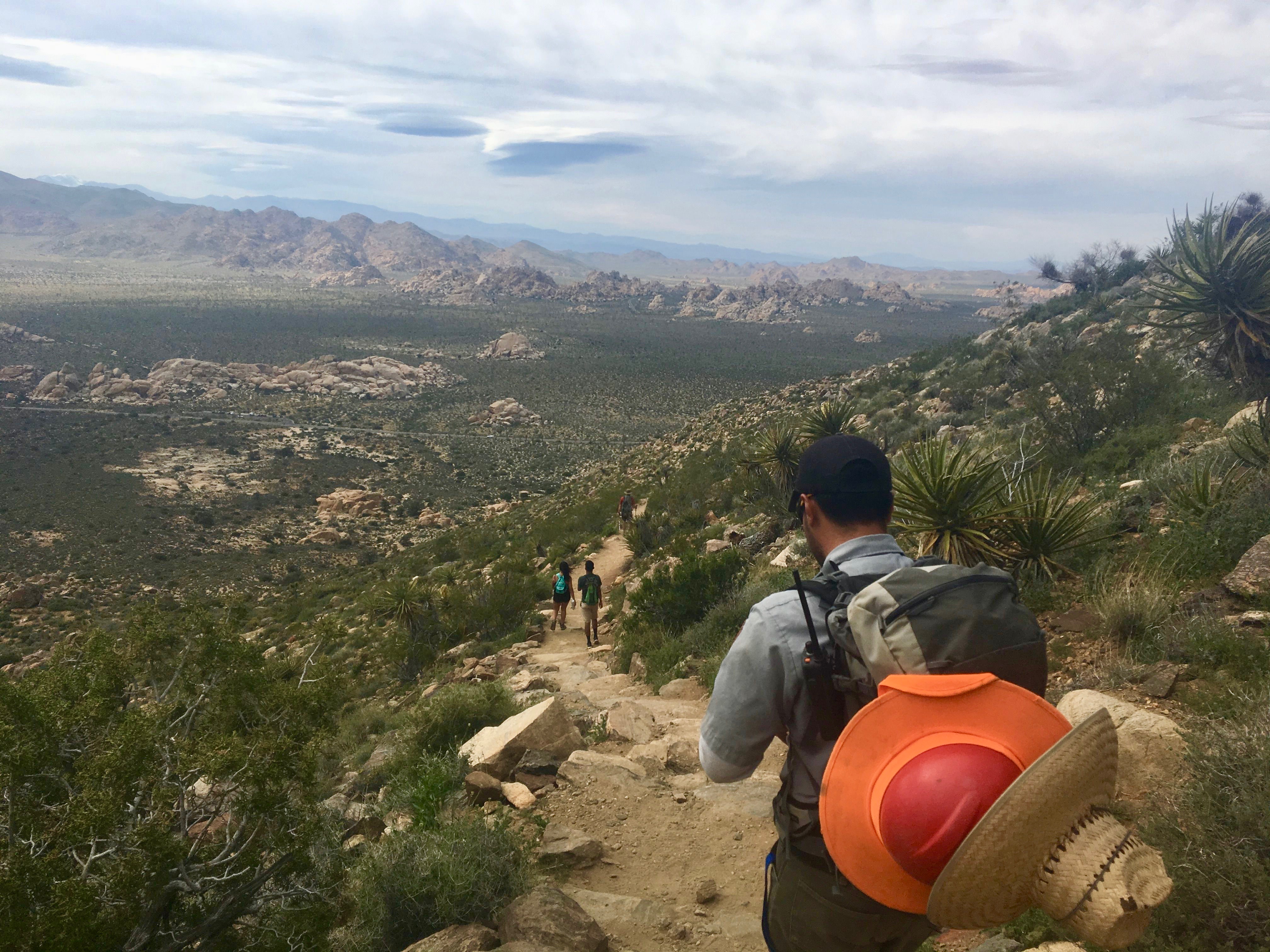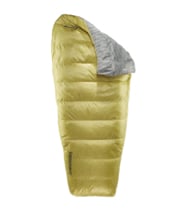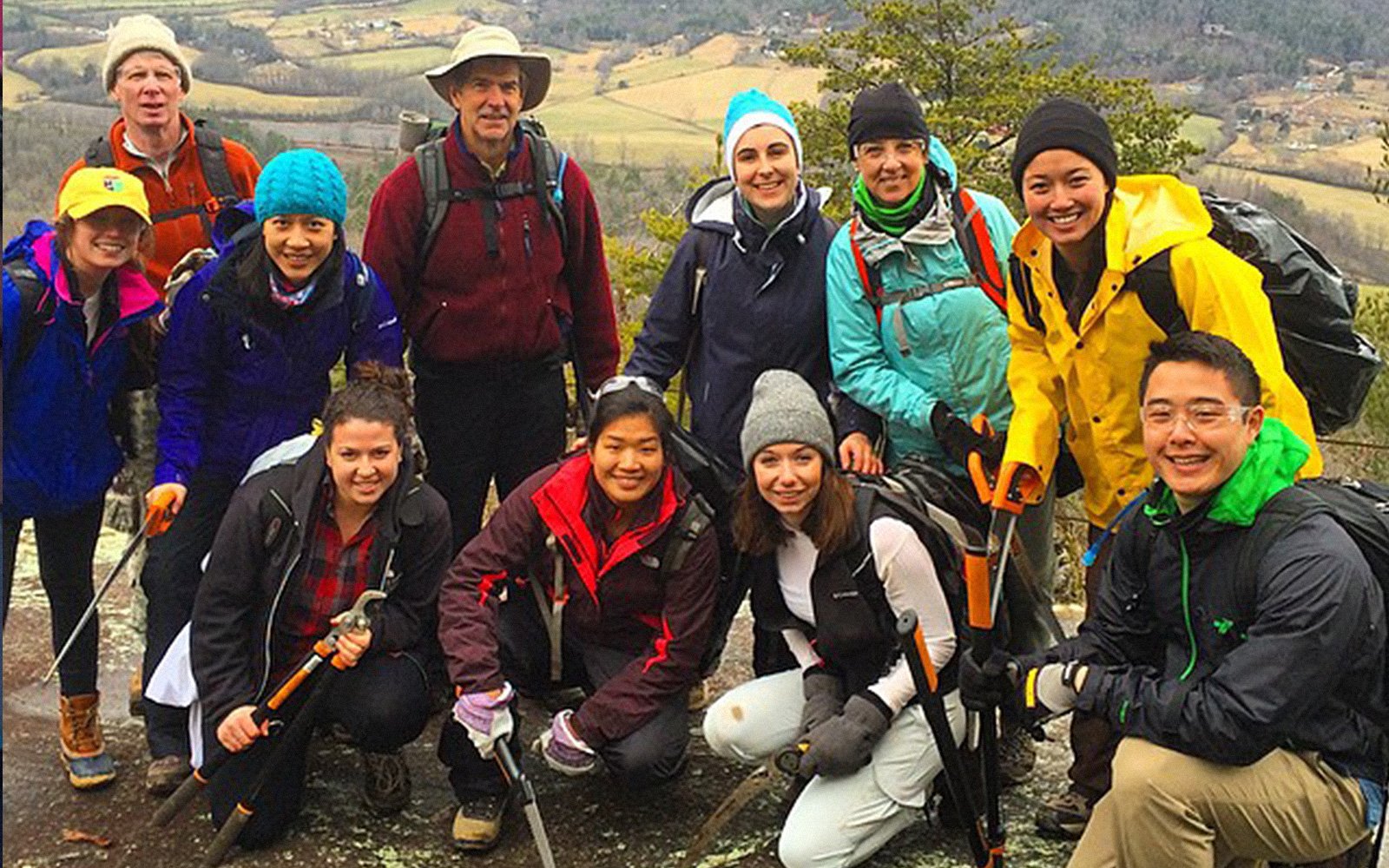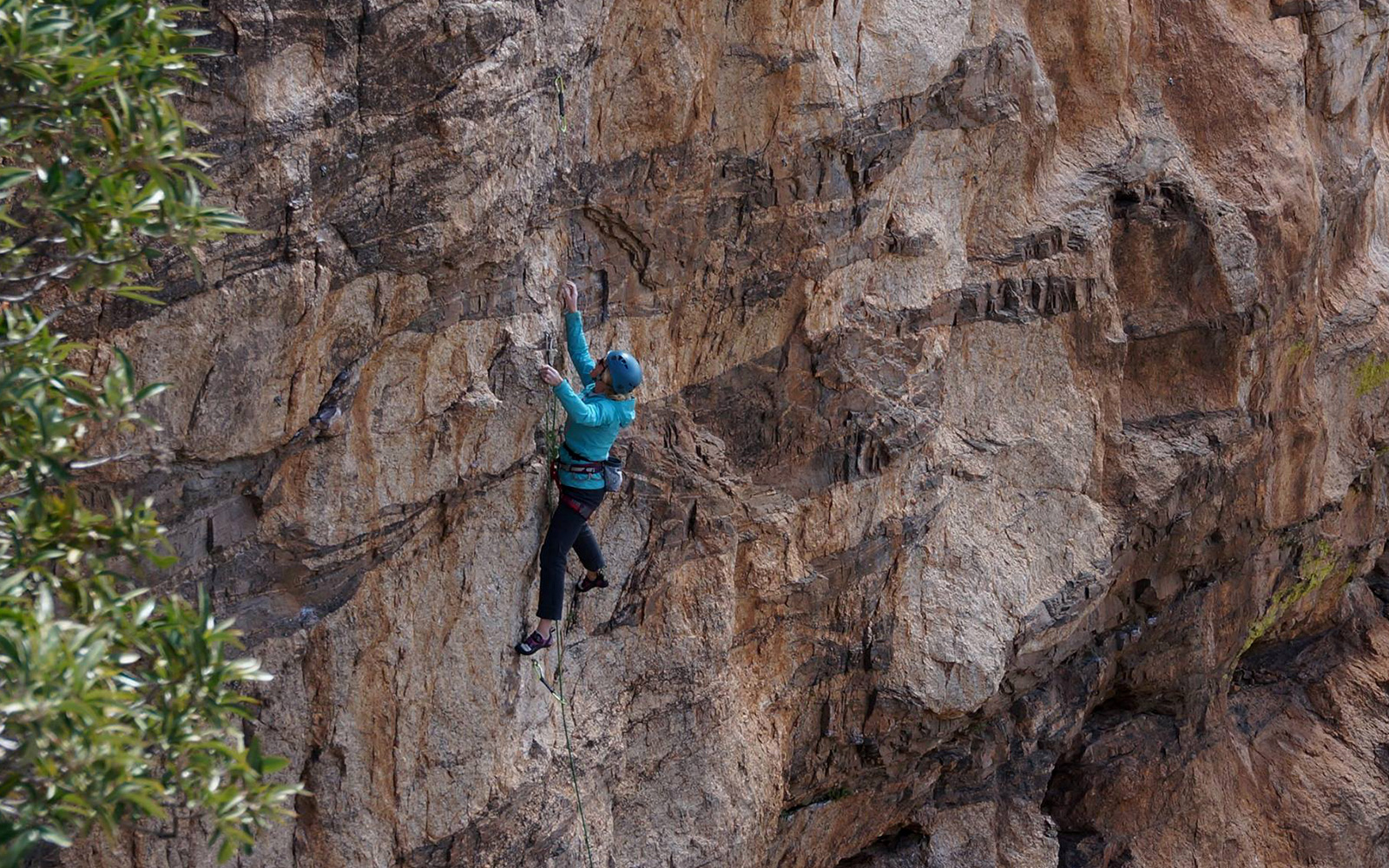This National Trails Day, Don’t go hiking; help steward our trails.
How many times have you noticed the trail you’re hiking on? Did you notice the stone steps that were perfectly flat, long enough for your foot and wide enough for passing? Could you pick out the rock walls that blended in with the landscape, allowing water to flow over them but not around or under? How about the slight dip and rise in the path, preventing puddles from forming and erosion cutting away the soil? These elements rarely occur naturally.
Well-made trails are the effort of a crew of skilled individuals and dedicated volunteers. They worked through the heat, rain, bugs, pinched fingers, scratched legs, and sore backs. They did this so that others could enjoy the natural wonders the trail leads to, creating opportunities for exploration, joy, and adventure. Their work also protects the natural environment by stabilizing soil that will feed the vegetation which in turn creates habitat for wildlife.
I know how important access is because, for 10 years, I’ve focused my time on improving trails in these wild spaces. From alpine approach trails in the Rockies to multi-use hiking and biking trails in the Front Range and climbing access trails to crags across the country, I’ve worked with thousands of volunteers who gave a day to give back to the trails they love. Chances are, you’re a frequenter of more than a few trails, so this National Trails Day, I’m encouraging people to help me and the multitude of other professionals and volunteers to be an advocate for trails.

A Life of Trails
My first summer as part of a trail crew brought me deep into the Rocky Mountains. A recent transplant to Colorado after college, I spent 30 days on a Geography field course in the Sangre de Cristo Wilderness with nine other students and three instructors. It took us two full days to hike our equipment, tools and supplies to our basecamp situated at 11,000’ in Lake Como Basin at the foot of three 14,000’ peaks.
Every day, we would wake up, cook breakfast, pack lunch, and hit the trail. We carried large rocks across steep and loose hillsides to build structures that stabilized the trail and protected the surrounding landscape. After work, we hiked back to camp, cooked dinner, and studied topics ranging from alpine botany and geology to public land management, wilderness, and climate. Once the sun has set, I made my way to my Therm-a-Rest sleeping pad to rest before waking with the sunrise and repeating it all over again.
I have continued to work in outdoor recreation conservation, taking what I learned during this first backcountry project to design, build, and restore trails with partners across the country. I’ve learned that trail work is not only challenging, but requires diligence, attention to detail, and most of all – patience. The work is not only physical, but demands a balance of ecology, construction, engineering, and art.
First, I had to understand the natural processes – where will the water go, how can you prevent soil from eroding, what plants need to be protected, which animals depend on this area to survive. Then, I learned the techniques of the trail – maintaining a certain grade so water can roll slowly off or connecting rocks so the structure withstands physical forces over time. I then began to incorporate small nuances that attracted people to stay on the trail, guiding their eyes and feet in the desired direction and keeping traffic away from sensitive areas. While a hiker walks along enjoying the landscape, flowers or birds, the trail worker stands still and thinks about how all of these things interact with one another.
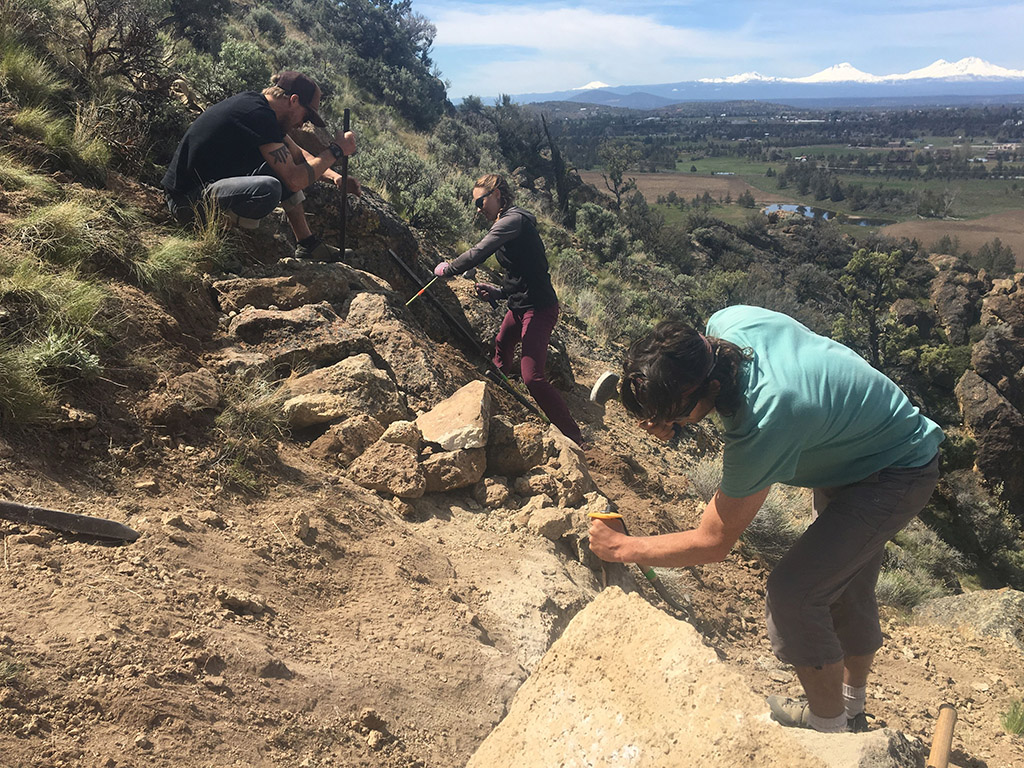
The Problem
Sadly, on most public lands, there are not a lot of resources available to support trail work. Land managers budgets for maintenance are dwindling every year. The rate trails are falling into disrepair far outweighs the amount of money available to take care of them. As more people get out into nature, the increased impacts have put more pressure on trails. Land managers are scratching their heads to keep up with it.
Enter the wonderful world of volunteer stewardship, local advocacy groups, and non-profit organizations. These folks recognize the need to find creative ways to fund, coordinate, and implement solutions to maintain access to our most popular recreation areas. Local advocacy groups organize passionate volunteers to help steward the parks, forests and open spaces that are seeing impacts from heavy use. They coordinate with the land manager to bring community volunteers to help, often bringing skills and expertise that supplement the needs of the park. These groups have become a saving grace to public land managers across the country and they have played a critical role in highlighting the importance of public access to lands for recreation.
Your Opportunity
Celebrate trails National Trails Day this year by finding a local organization that is seeking volunteers for a trail project. If you can’t find one, speak to the land managers at your local park or open space to see if you can help arrange a cleanup. At the least, go out and admire the hard work that has gone into the trail, send a thank you to a local organization, or donate to a group that is maintaining access for your favorite trails.
Related Posts:
